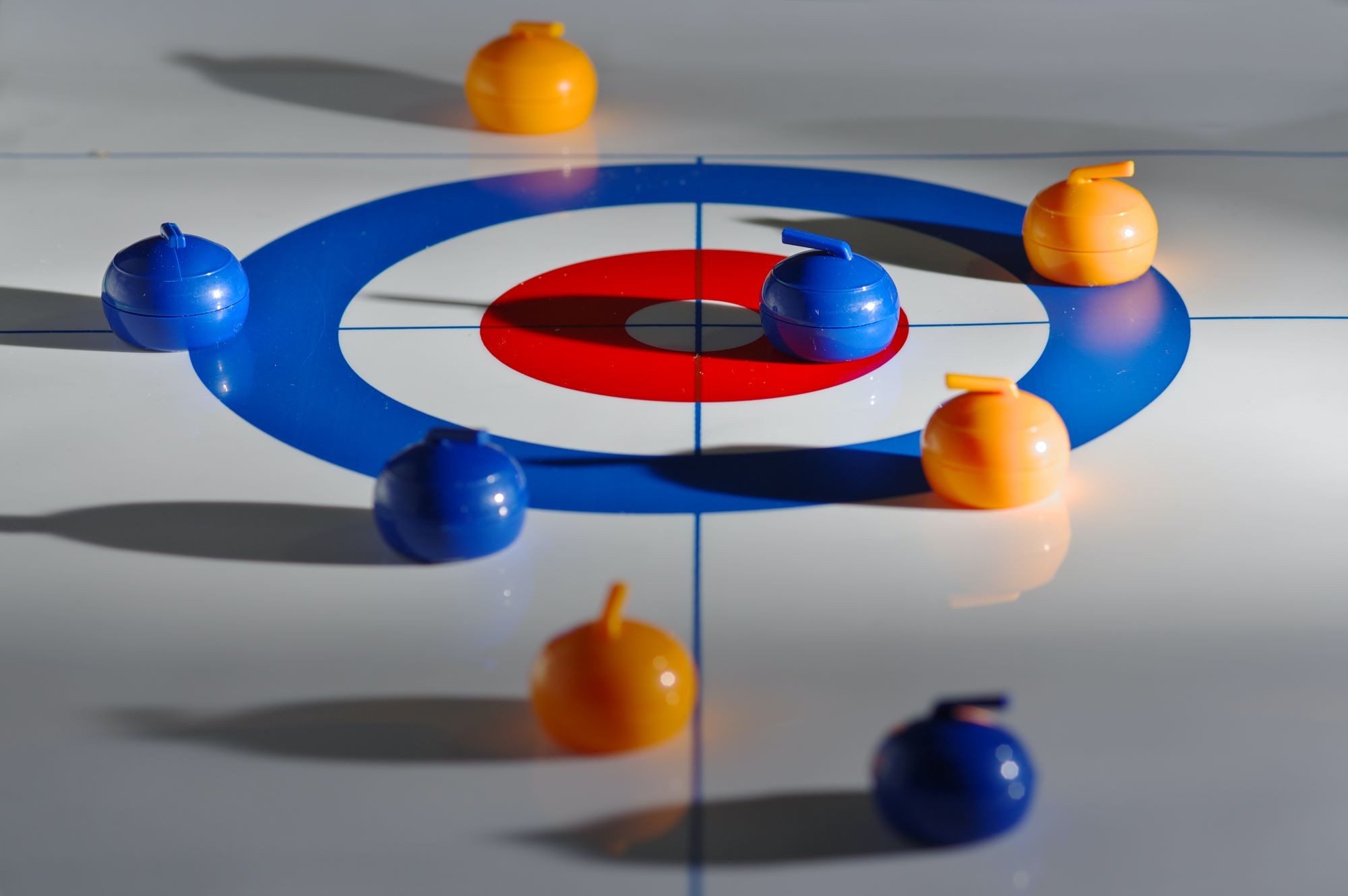Reports & Insights
Controlling Stones: An Ode to Olympic Curling

Controlling Stones: An Ode to Olympic Curling
Reports & Insights
Generally at the Winter Olympics, athletes are preoccupied with speed or style. Beat the field down (or for those of a cross-country bent, up) that hill. Spin higher, faster, more beautifully.
Curling is a glorious anomaly of the winter games. It is a sport you win with odd shoes on. It is a sport you can win without taking off your tracksuit, a sport you can play with hair up, under a cap, or down. Slipping over means mild embarrassment but no points lost, no major injuries. There’s no leaping, no gradient, no sharpened object in sight. The only curvature comes not from the course but from the gentlest twirl of an athlete’s fingers. Unusually, for the Winter Olympics, it is a sport you win by staying on one plane.
Not in curling the pile-ups of athletes ‘stoked’ for their fellow competitors. Handshakes are still more normal in this most formal but incredibly sportsmanlike of Winter Olympic sports. Amplitude is a foreign term in curling clubs – a domain dominated by a dictionary full of hog lines, hack weights, forces and steals, a game where you often win by making draws. The degree of difficulty is not presented on a silver platter to the judges beforehand, it evolves, through each end, dynamic, stretching with every good shot of your opponents.
Although it did make a passing appearing in On Her Majesty’s Secret Service, you are unlikely to see James Bond escaping his enemies on a curling rink. Downhill skiing and off piste skills are more his terrain. Other sports require daredevil feats high in the air or invoke the barren primordiality of the arctic wildernesses. Never irritate a biathlete. Those champions will hunt you down, chase you up snow-covered hill and down frozen dale, and then, with control over their heart rate, shoot you down, standing or prone, their drool freezing on your still corpse. Curlers are not so fearsome.
Despite all this, the sport has more than enough charms of its own. Move over quidditch, there’s already a magical sport played with broomsticks. Because make no mistake about it, curling, with it’s tactical intricacies and its sly escalation of tension, can exert an almost sorcerous hold, and does so games after games. The most common cry to hear during a match is a piercing ‘haaaaaaaard’, and, well, yes, it looks very much like it is, so fine are the lines between success and failure, so tricky the ongoing computation of line and weight, like putting on ice, but with other players’ balls to get round.
And for all that it might appear a simple game of throwing stones towards a fixed target, there are layers of technical meticulousness required to engineer the precise draws and takeouts on display. The water to make the rink and the pebbles on the bottom of the curling stone requires multi-tank reverse osmosis and de-ionisation, producing liquid so pure it would burn your throat to drink. In Britain, it is common to associate the maxim of marginal gains to Dave Brailsford’s cycling revolution, but it is a philosophy that has come to underpin the prowess of ‘Lammie and Hammie’s sweeping in Bruce Mouat’s rink’s run to the final as well.
From a British perspective, part of curling’s appeal is the promise of the end of medal famine. Rhona Martin and her rink’s 2002 triumph was Britain’s first gold since Torvill and Dean. Pubs and private households shouted themselves hoarse into the early hours to watch that most understated, thrawny Scotswoman throw her stone of destiny at Salt Lake City.
The game has moved on since then. Free guard zones were introduced to encourage attacking play. Another evolution is planned, with a “no-tick zone” set to be trialed that will further cement the inviolability of guard stones. Sweeping has become a more athletic pursuit, although there is still room for competitors, like the USA’s luscious locked, clown-shod, finger-pistoling Matt Hamilton, who look far from Olympian in stature. Still though, for all its shifts, curling often represents one of Britain’s best medal possibilities – in 2022, it may well be their only triumph.
Curling is, uniquely at the Winter Olympics, a sport where speed and style are sacrificed at one alter – precision. Vision too is needed, the chess-like foresight to picture future shots, to manouevre positions and open up later avenues. Guard stones that often seem superfluous early on often prove to be crucial.
With all of this, is it any wonder that celebrity fans form an incongruous army. Sports stars from JJ Watt to Southampton football team have joined cultural giants George Clooney and Bruce Springsteen in professing support for curlers in recent Olympics. Far from pitying the fools, Mr T can be found cheering on the US rinks. Even the Rock, Dwayne Johnson himself, discovered curling in Beijing, and if ever there was a case for nominative determinism, he is surely a shoo in for the next games.
And yet, the sad thing is that for all its curling is so often forgotten between Olympic cycles. For all Great Britain’s success, it remains a chiefly Scottish pursuit. It is Scotland’s men and women whose world championship placings qualify team GB, time and time again, for the Olympics. And, with only one rink in England, in Tunbridge Wells, the sport is unlikely to see a participation surge even if the team come home with a double gold medal. Which is a shame, because curling can be played by everyone from pre-teens to retirees, in summer or winter, rain or shine. Team play adds a social element.
The sport is also making progress towards gender parity. The mixed doubles event, introduced at the 2018 games and returning in Beijing, was a forerunner of the 2022 rush to create mixed gender events. In Canada, where Olympic trials can be as competitive as continental championships, men’s and women’s teams receive equal prize money.
There are other sports at the Winter Olympics that are more manically fun – skicross / snowboard cross, we are looking at you. There are sports like downhill skiing, and big air that are more terrifyingly impressive. There are sports that demonstrate greater endurance or recovery. Again, we repeat the public health warning never to irritate a biathlete. There are sports that are more graceful and rhythmic.
But there is nothing quite like curling.
Curling originated in 16th century Scotland and was originally played on frozen lochs with stones of iron
More News Articles
More News Articles
Looking for extensive insight and strategic solutions for your organisation? We can help.



